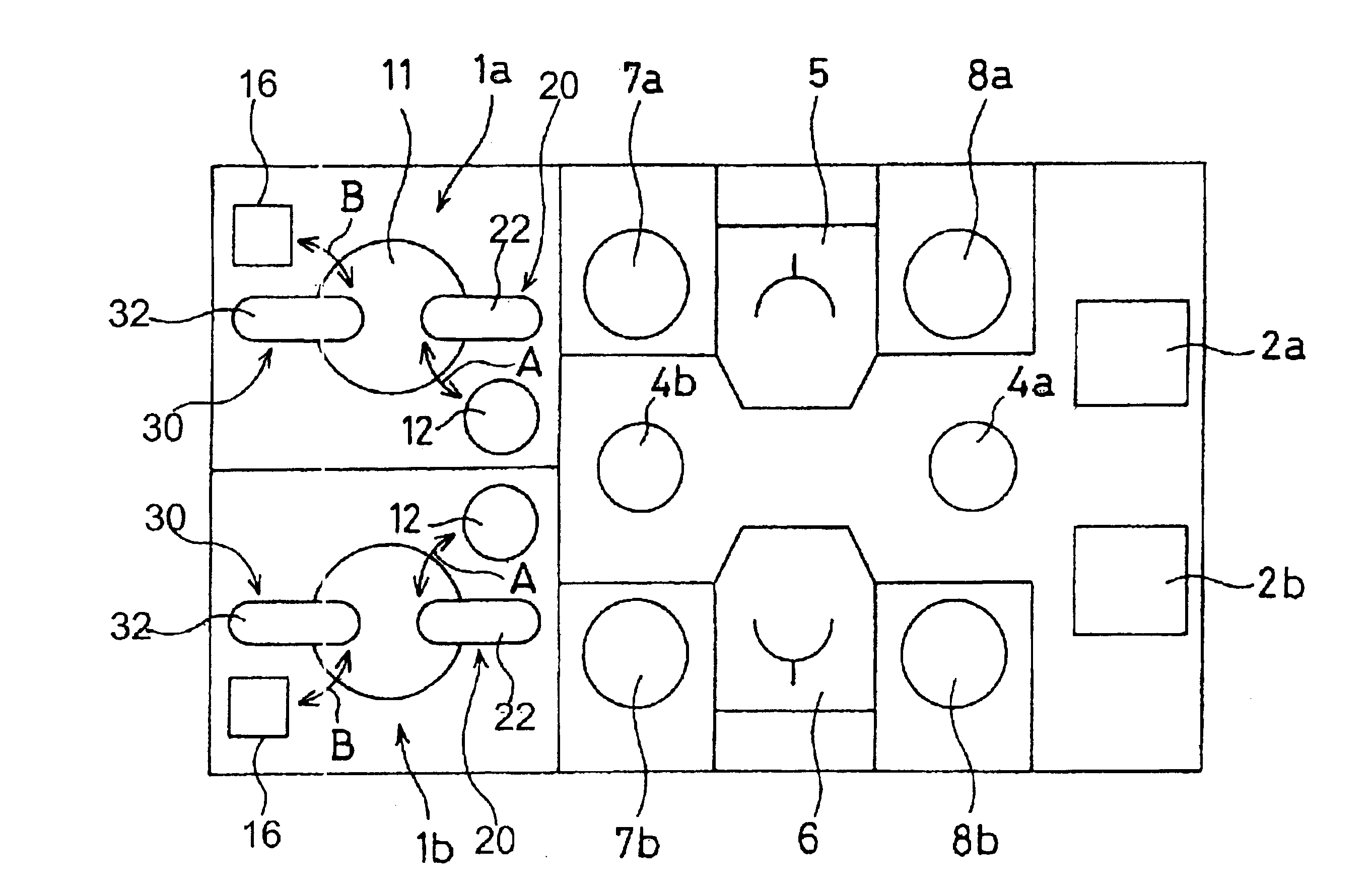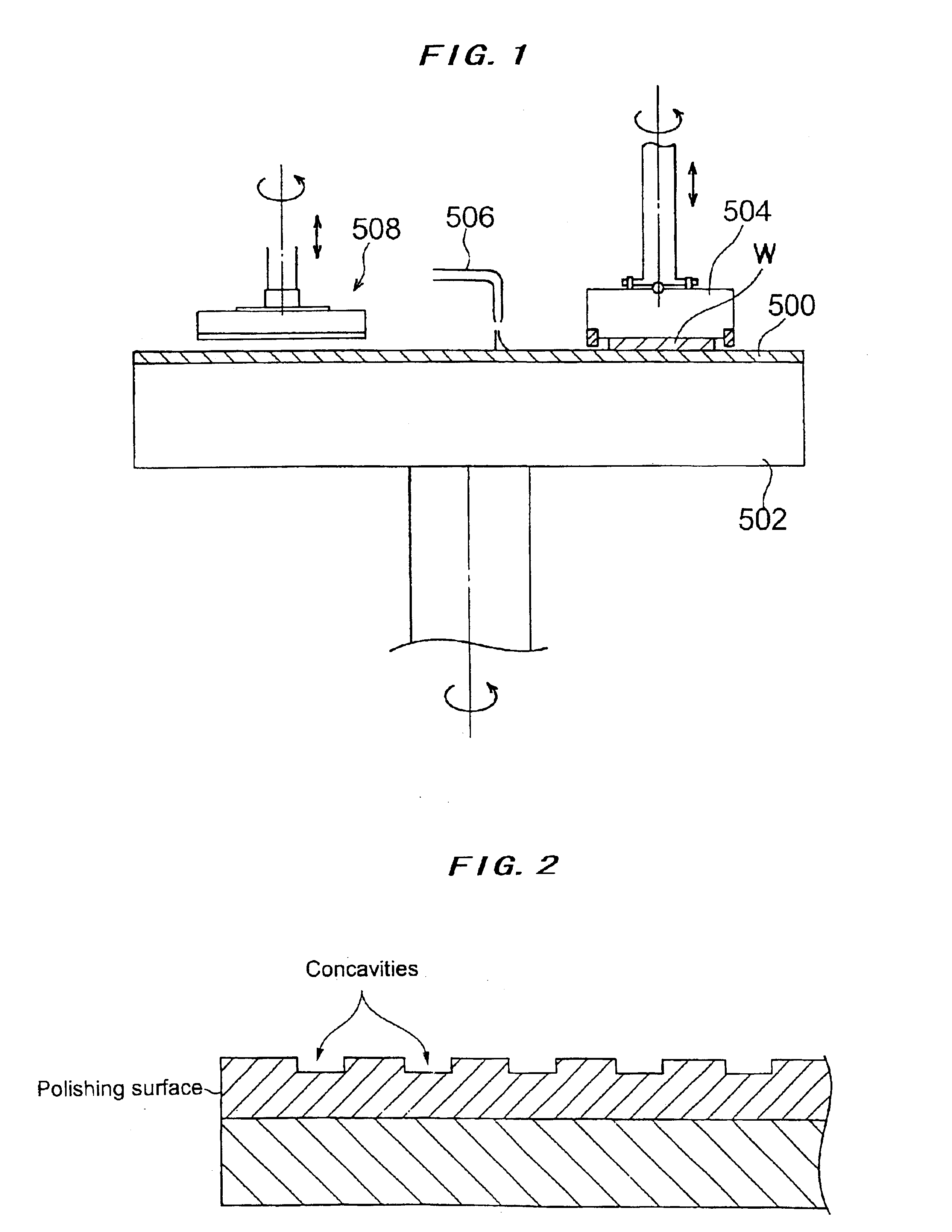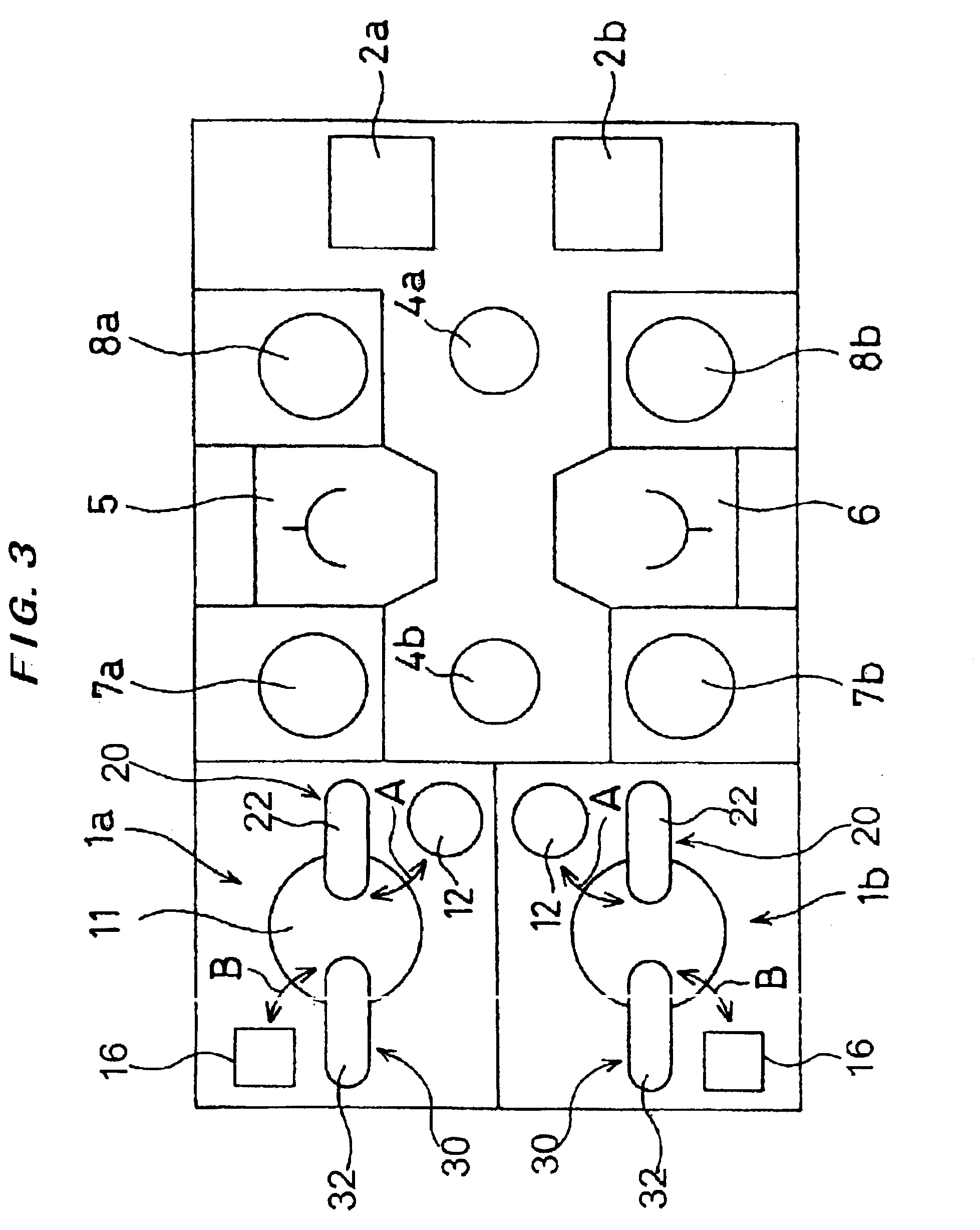Polishing apparatus
a technology of polishing apparatus and concave, which is applied in the direction of cleaning using liquids, lapping machines, abrasive surface conditioning devices, etc., can solve the problems of clogging concave concave, difficult to remove the attached polishing liquid by cleaning, and affecting the polishing efficiency, etc., to achieve high polishing performance, effective removal of foreign matter clogging concave, and high polishing quality
- Summary
- Abstract
- Description
- Claims
- Application Information
AI Technical Summary
Benefits of technology
Problems solved by technology
Method used
Image
Examples
Embodiment Construction
[0041]A polishing apparatus according to a first embodiment of the present invention will be described below with reference to FIGS. 3 through 12. FIG. 3 is a schematic plan view showing a polishing apparatus according to the first embodiment of the present invention.
[0042]As shown in FIG. 3, the polishing apparatus has a housing, for example, having a rectangular shape, a pair of polishing sections 1a, 1b, for example, disposed on one side of the housing so as to face each other, and a pair of load / unload units, for example, disposed on the other side of the housing for receiving cassettes 2a, 2b which accommodate a plurality of semiconductor wafers. Two transfer robots 4a, 4b for transferring semiconductor wafers are disposed, for example, on a line connecting the polishing sections 1a, 1b to the load / unload units, to form a transfer line. Two inverters 5, 6 are disposed on both sides of the transfer line, and two sets of cleaning units 7a, 7b and 8a, 8b are disposed on both sides...
PUM
| Property | Measurement | Unit |
|---|---|---|
| shape | aaaaa | aaaaa |
| distances | aaaaa | aaaaa |
| pressure | aaaaa | aaaaa |
Abstract
Description
Claims
Application Information
 Login to View More
Login to View More - R&D
- Intellectual Property
- Life Sciences
- Materials
- Tech Scout
- Unparalleled Data Quality
- Higher Quality Content
- 60% Fewer Hallucinations
Browse by: Latest US Patents, China's latest patents, Technical Efficacy Thesaurus, Application Domain, Technology Topic, Popular Technical Reports.
© 2025 PatSnap. All rights reserved.Legal|Privacy policy|Modern Slavery Act Transparency Statement|Sitemap|About US| Contact US: help@patsnap.com



